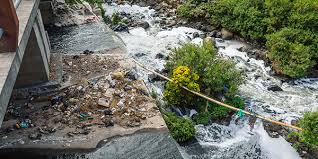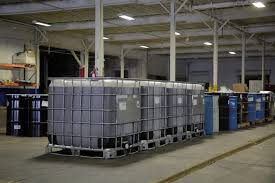Every individual and company in every industry, including residential, commercial, industrial, construction, agricultural, and more, will inevitably produce waste. The biggest problem that waste presents is how to get rid of it, which is why efficient waste disposal is so important.
The disposal of garbage generated in the UK is a massive logistical undertaking that involves local governments, municipal collectors, commercial businesses, and outsourced management plans.
The next step in waste management is disposal, which ideally entails putting radioactive material in a special facility, though there are additional disposal options that include releasing effluents into the environment within legal bounds.
Locating waste disposal sites, identifying the waste materials that have been disposed of overtime and precisely where they were disposed of, establishing ownership, and determining whether disposal techniques were appropriate or improper are crucial issues in environmental litigation. Waste disposal is an activity that directly causes significant environmental damage.
In the United States, waste disposal is a multibillion dollar industry. The treatment and disposal of bio-solids and wastewater, however, come with a number of risks. The pathogenic microorganisms, including bacteria, viruses, protozoa, and helminths, that are present in waste effluents are major dangers.
The trickling filter and activated sludge systems used in wastewater treatment plants have the potential to produce significant volumes of aerosols, some of which have been shown to contain harmful microbes. The creation of aerosols carrying dangerous bacteria is also a result of other components of the treatment process, like composting and land disposal.
Waste that is toxic or capable of harming the environment or human health is referred to as hazardous waste. Hazardous waste is produced from a variety of sources, including industrial manufacturing process wastes, batteries, and sludge. It can also be in the form of liquids, solids, gases, or even mud.
For managing hazardous trash, there are many options. The best course of action is to lessen waste production at the point of origin or recycle waste materials for use in other worthwhile endeavors.
However, despite being desired solutions, reduction and recycling are not seen as the only solution to the issue of disposing of hazardous waste. A certain quantity of hazardous waste will always need to be treated, stored, or disposed of.
Treatment of Hazardous Waste
Chemical, thermal, biological, and physical treatments are all effective for handling hazardous waste. Precipitation, oxidation and reduction, neutralization, and ion exchange are examples of chemical processes.

High-temperature incineration is one of the thermal processes that may both destroy and cleanse some organic wastes. The burning of garbage, whether it be solid, liquid, or sludge, requires specialized thermal equipment.
Read Also: Complete List of Recyclable Wastes (Waste Recyclables)
It is also possible to biologically treat some organic pollutants, including waste from the petroleum sector. Land farming is one technique used to treat hazardous waste organically.
This method involves carefully blending garbage with topsoil on a suitable piece of land. Along with nutrition, it is possible to add microbes that can digest the waste.
Sometimes a strain of bacteria created through genetic engineering is employed. Neither food nor fodder crops are cultivated on the same property. On previously contaminated areas, hazardous material can also be stabilized by microbes; this process is known as bioremediation.
It is necessary to appropriately dispose of hazardous materials that cannot be eliminated by incineration or other chemical procedures. Land disposal is the final destination for the majority of these wastes, albeit it is not a desirable practice due to the inherent environmental dangers involved.
The two fundamental techniques for disposing of land are subsurface injection and landfilling. Surface storage or containment systems are frequently used as a stopgap measure before disposal on land.
In the past, certain hazardous materials were dumped in common landfills. Unfavorable quantities of dangerous pollutants subsequently seeped into the ground as a result. These chemicals gradually found their way into the hydrologic systems of nature.
Nowadays, many landfills must take precautions against groundwater contamination. For instance, a barrier needs to be put in place at the landfill’s base to contain any hazardous materials that might still be present in the waste that is being disposed of.
Currently, hazardous wastes frequently need to be stabilized and solidified before going into a landfill. They also need to go through various treatments before being stabilized and disposed of.
For industrial fuel, the majority of combustible materials can be recycled. Lead acid batteries are one example of a substance having hazardous elements that can be recycled.
Hazardous waste might be stored in a permanent disposal facility or a hazardous waste dump. A landfill, as it relates to hazardous waste, is defined as a place where hazardous waste is disposed of or is located on land, but which is not a pile, a land treatment facility, a surface impoundment, an underground injection well, a salt dome formation, a salt bed formation, an underground mine, a cave, or a corrective action management unit.
It is possible to create new products from some hazardous wastes. Electronic circuit boards or lead-acid batteries are two examples. These ashes’ heavy metals may bind to other contaminants and turn them into solids that are easier to dispose of, or they may be utilized as pavement filler, depending on how they are treated. By recycling the safe product, these processes lessen the hazard posed by dangerous substances like fly and bottom ash.
If not disposed of properly, some household goods could endanger human health or the environment. Check to see whether your local government has a service that can assist you in getting rid of hazardous garbage such as batteries and chemicals.
Only authorized sites close to you can be used to dispose of hazardous trash. Hazardous items can be collected from your home or place of business by specialized waste disposal firms. After that, they can deliver the dangerous goods to the right processing facilities.
In conclusion, neglecting to properly and safely dispose of this garbage can have detrimental effects on the environment and human health.
Heavy fines, legal action, and perhaps jail may follow. Therefore, it is crucial to design a waste management system that properly and efficiently disposes of hazardous material in accordance with the hazardous waste management regulations 2005.

